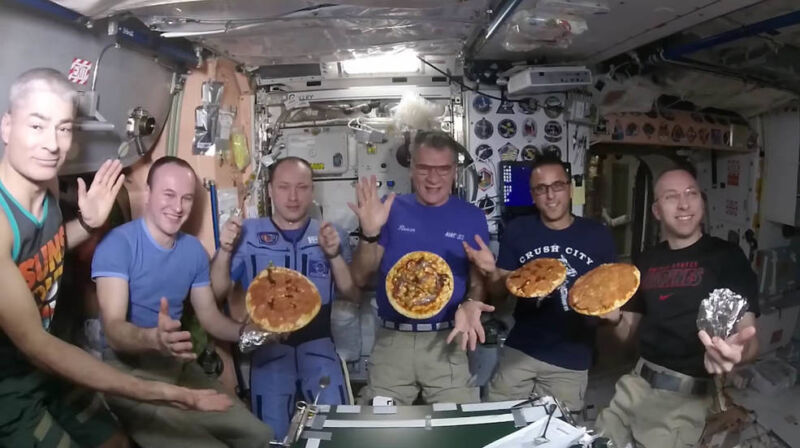Pass the sriracha —
The visual environment of the ISS seems to influence people’s experience of food.
Jacek Krywko
– Jul 26, 2024 5:17 pm UTC

Enlarge / The environment you’re eating in can influence what you taste, and space is no exception.
Astronauts on the ISS tend to favor spicy foods and top other foods with things like tabasco or shrimp cocktail sauce with horseradish. “Based on anecdotal reports, they have expressed that food in space tastes less flavorful. This is the way to compensate for this,” said Grace Loke, a food scientist at the RMIT University in Melbourne, Australia.
Loke’s team did a study to take a closer look at those anecdotal reports and test if our perception of flavor really changes in an ISS-like environment. It likely does, but only some flavors are affected.
Tasting with all senses
“There are many environmental factors that could contribute to how we perceive taste, from the size of the area to the color and intensity of the lighting, the volume and type of sounds present, the way our surroundings smell, down to even the size and shape of our cutlery. Many other studies covered each of these factors in some way or another,” said Loke.
That’s why her team started to unravel the bland ISS food mystery by recreating the ISS environment in VR. “Certain environments are difficult to be duplicated, such as the ISS, which led us to look at digital solutions to mimic how it felt [to be] living and working in these areas,” said Julia Low, a nutrition and food technologist at the RMIT University and co-author of the study.
Once the VR version of the ISS was ready, the team had 54 participants smell flavors of vanilla, almonds, and lemon. The first round of tests was done in a pretty normal room, and the second with the VR goggles on, running the simulated ISS environment complete with sterile, cluttered spaces, sounds present at the real ISS, and objects floating around in microgravity.
The participants said the lemon flavor seemed the same in both rounds. Almonds and vanilla, on the other hand, seemed more intense when participants were in the VR environment. While that’s the opposite of what might be expected from astronauts’ dining habits, it is informative. “The bottom line is we may smell aromas differently in a space-like environment, but it is selective as to what kind of aromas. We’re not entirely sure why this happens, but knowing that a difference exists is the first step to find out more,” Loke said.
Loke and her colleagues then pulled out a mass spectrometer and took a closer look at the composition of the flavors they used in the tests.
Space-ready ingredients
The lemon flavor in Loke’s team tests was lemon essential oil applied to a cotton ball, which was then placed in a closed container that was kept sealed until it was given to the participants to smell. The vapors released from the container contained several volatile chemicals such as limonene, camphene, 3-carene, and monoterpene alcohols like linalool, carveol, and others.
Almond flavors contained similar chemicals, but there was one notable difference: the almond and vanilla flavors contained benzaldehyde, while the lemon did not. “Benzaldehyde naturally gives off a sweet aroma, while the lemon aroma, which did not have it, has a more fruity and citrusy aroma profile. We believe that it may be the sweet characteristics of aromas that leads to a more intense perception in [simulated] space,” said Loke.
Page: 1 2 Next →
>>> Read full article>>>
Copyright for syndicated content belongs to the linked Source : Ars Technica – https://arstechnica.com/?p=2039520































